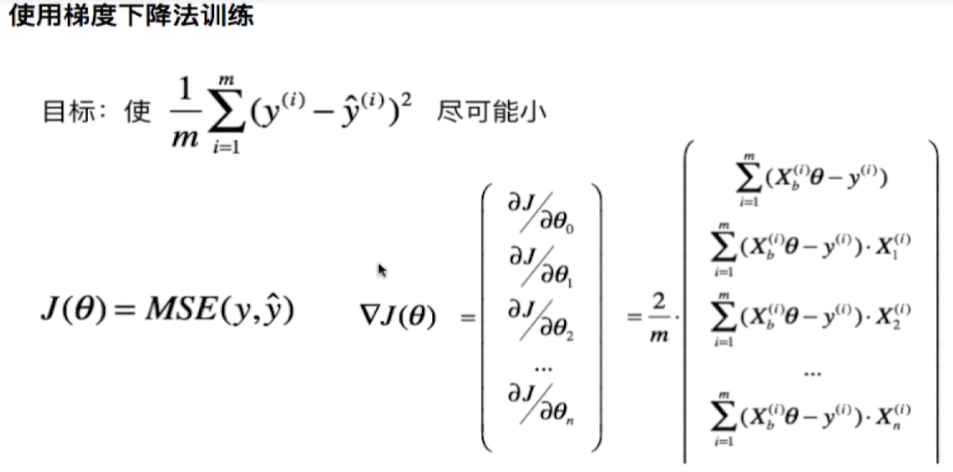实现线性回归中的梯度下降法

在LinearRegression类中实现了fit_gd函数:
def fit_gd(self, X_train, y_train):
assert X_train.shape[0] == y_train.shape[0], "The X_train's size should be equal to the y_train's size"
def dJ(theta, X_b, y):
gd = np.zeros_like(theta)
for i in range(len(theta)):
if i == 0:
gd[0] = np.sum((X_b.dot(theta) - y))
else:
gd[i] = np.sum((X_b.dot(theta) - y).dot(X_b[:, i]))
return gd * 2 / len(X_b)
def J(theta, X_b, y):
try:
return np.sum((X_b.dot(theta) - y) ** 2) * 2 / len(X_b)
except:
return float('inf')
def gradient_descent(X_b, y, initial_theta, eta, n_iters=1e4, epsilon=1e-8):
theta = initial_theta
i_iter = 0
while (i_iter < n_iters):
last_theta = theta
gradient = dJ(theta, X_b, y)
theta = theta - eta*gradient
if np.abs(J(theta, X_b, y) - J(last_theta, X_b, y)) < epsilon:
break
i_iter += 1
return theta
X_b = np.hstack((np.ones((len(X_train), 1)), X_train))
initial_theta = np.zeros(X_b.shape[1])
eta = 0.01
self._theta = gradient_descent(X_b, y_train, initial_theta, eta)
self.coef_ = self._theta[1:]
self.intercept_ = self._theta[0]
return self
测试代码:
import numpy as np
import matplotlib.pyplot as plt
import sys
sys.path.append(r'C:\\N-20KEPC0Y7KFA-Data\\junhuawa\\Documents\\00-Play-with-ML-in-Python\\Jupyter')
import playML
from playML.LinearRegression import LinearRegression
lin_reg = LinearRegression()
np.random.seed(666)
x = 2*np.random.random(size=100)
y = x*3. + 4. + np.random.normal(size=100)
X = x.reshape(-1, 1)
lin_reg.fit_gd(X, y)
y_predict = x*lin_reg.coef_ + lin_reg.intercept_
plt.scatter(x, y)
plt.plot(x, y_predict, color='r')
lin_reg._theta
array([4.06880601, 3.08632808])
